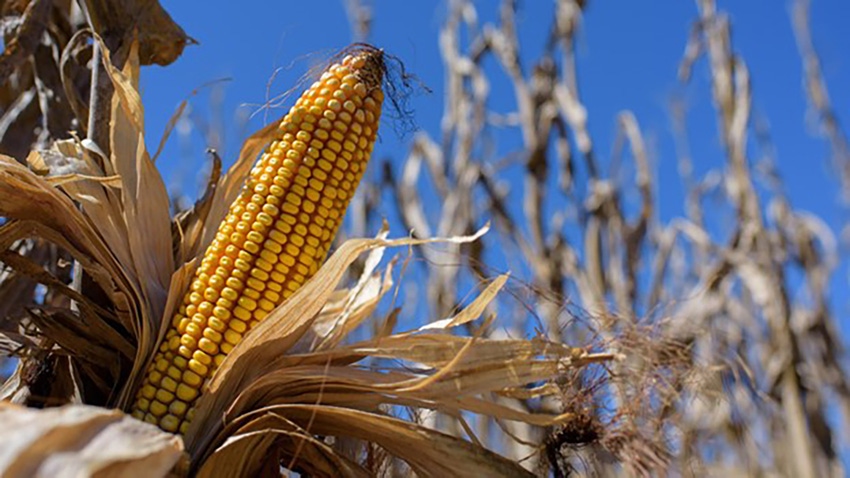September 25, 2023

The favorable weather that kicked off planting season for Mississippi corn producers stayed in play throughout the growing season and is helping growers wrap up harvest.
“We are well ahead of schedule with harvest,” Erick Larson, grain crops agronomist with the Mississippi State University Extension Service, said Sept. 12. “We’re about 84% finished. The hot, dry weather we’ve had since mid-July promoted early harvest.
“Some years, we have more rainfall than normal. That can prevent farmers from getting into fields to harvest. It can also compromise corn quality and plant stability,” Larson said.
Mississippi producers planted 790,000 acres of corn, up from the 700,000 acres forecast just before farmers began planting in mid-March. The U.S. Department of Agriculture National Agricultural Statistics Service estimates 770,000 of those acres will be harvested for grain.
The jump in acreage can be attributed to drier than normal weather during the spring that allowed planting progress, growers who use crop rotation systems returning to corn and a decrease in nitrogen prices. Nitrogen is a key nutrient for corn production.
Yield estimates
Yield estimates have steadily increased through the summer. The latest forecast by USDA puts yield at an expected 182 bushels per acre. That estimate is up three bushels from August and is 17 bushels higher than the average harvested in 2022.
“This is the highest yield we’ve had in at least five years and may set a new state record,” Larson said.
Mississippi’s late summer drought conditions did not affect the crop because most corn was nearly mature.
“We had favorable conditions in all the critical stages of growth,” Larson said. “During June and early July, we generally had ample rainfall and moderate nighttime temperatures. That is the best scenario during the reproductive stage.”
However, some producers saw significant hail damage after June storms.
“The damage was localized, but numerous storms created issues across many regions of the state and caused heavy losses in severe cases. Some corn fields were virtually completely defoliated by hail and suffered more than 50% grain yield loss,” Larson said.
He said the impact of hail damage on corn was high because the damage occurred near tassel stage when all leaves were exposed, and corn is most vulnerable to leaf defoliation caused by hail or any stress.
With U.S. corn production up an estimated 10% from 2022, prices are down.
Corn prices
December corn futures prices averaged $4.85 per bushel the week of Sept. 4. According to USDA projections, the average farm price will be $4.90 a bushel, which is down $1.65 a bushel from last year.
“High input costs kept planted acres down last year,” said Will Maples, Extension agricultural economist. “But as these costs eased some this year, producers responded by planting close to 6 million more acres.
“Higher production means ending stocks are projected up 50% compared to last year, which will continue to dampen any major price rallies,” he said.
Maples said producers who ship their crops by Mississippi barges may see lower prices as the drought continues to reduce river levels to near-record lows.
“With the current weather forecasts calling for more dry weather, barge freight rates are likely to increase to the levels we saw last year,” he said. “This will impact the basis producers will receive when selling to the river.
“There are not really any good options for producers who must deliver straight from the field. If the river levels continue to drop, producers will need to explore their options in using on- or off-farm storage to hold over selling grain at low basis levels,” Maples said.
Source: University of Mississippi Extension Service
About the Author(s)
You May Also Like






